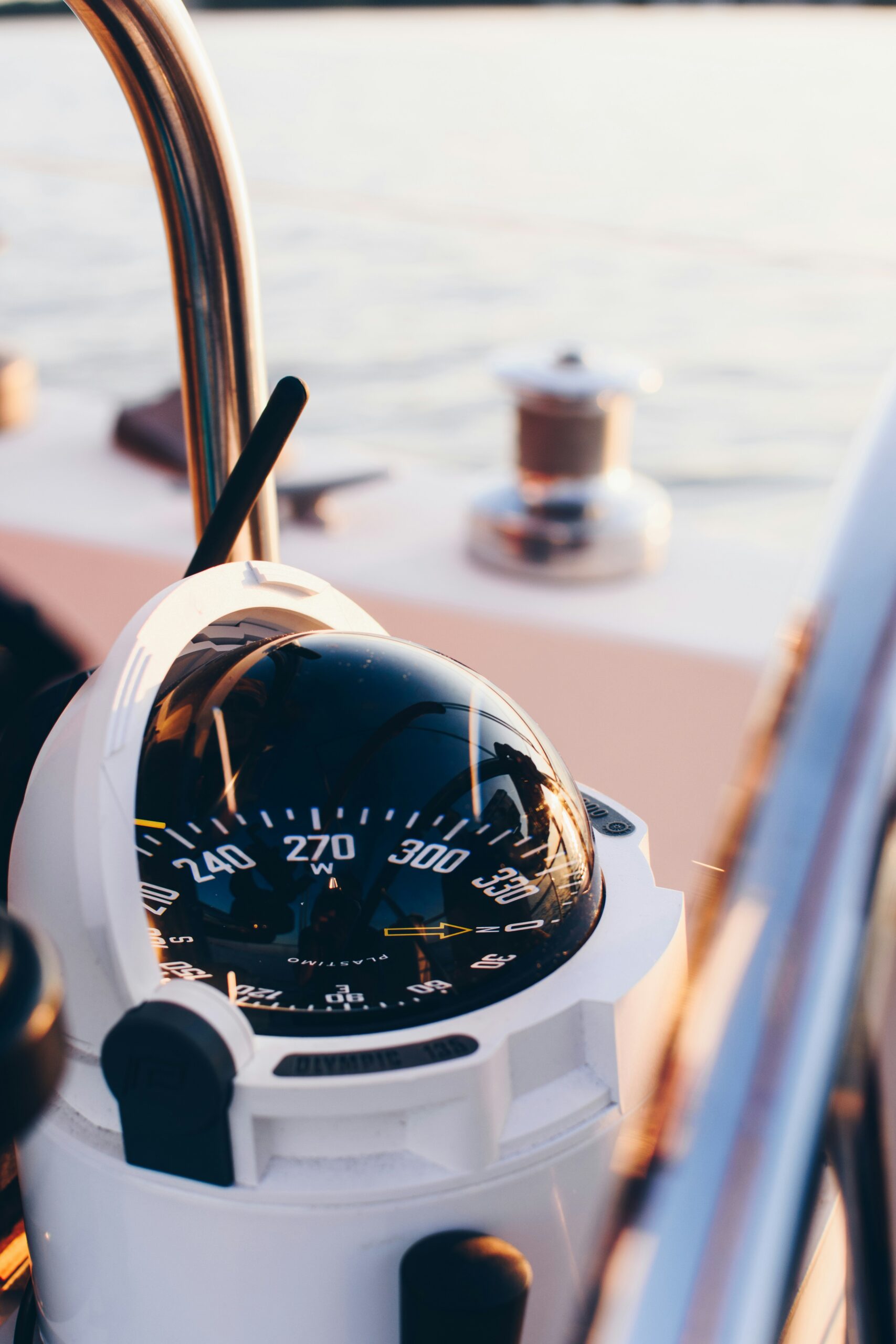
Photo by <a href="https://unsplash.com/@iankeefe" rel="nofollow">Ian Keefe</a> on <a href="https://unsplash.com/?utm_source=hostinger&utm_medium=referral" rel="nofollow">Unsplash</a>
Introduction to the Sextant Mark 1 Ilon
The Sextant Mark 1 Ilon is a distinguished navigational instrument that has captivated enthusiasts and professionals alike for many years. Its origins trace back to the 18th century when mariners sought a reliable method to determine their position at sea using celestial navigation. The sextant operates by measuring the angle between a celestial object and the horizon, allowing navigators to plot their course with precision. The Mark 1 Ilon represents a significant advancement in sextant design, characterized by its sturdy construction and user-friendly features that cater to both seasoned navigators and novices.
What sets the Sextant Mark 1 Ilon apart from its predecessors and contemporaries is its exceptional craftsmanship and attention to detail. Featuring high-quality optics and durable materials, this model is known for its accuracy and reliability. These characteristics not only enhance usability but also contribute to the instrument’s longevity in various marine environments. Its design has been refined over decades, integrating feedback from experienced mariners to address common challenges encountered during navigation. For many professionals, the Mark 1 Ilon is seen not just as a tool, but as a symbol of traditional navigation practices.
Despite the rapid advancements in digital navigation technologies, the Sextant Mark 1 Ilon continues to hold a prominent place in the navigation community. Many sailors and navigators appreciate the tactile experience and the intellectual engagement that using a sextant provides. It serves as a backup system, ensuring navigators maintain essential skills when technological failures occur. The reliability of this classic instrument underscores its relevance, making it a sought-after tool among navigation enthusiasts who value both heritage and functionality in their seafaring experiences.
The Anatomy of the Sextant Mark 1 Ilon
The Sextant Mark 1 Ilon, a time-honored tool in the realm of navigation, comprises several critical components that work in concert to yield precise measurements. Understanding each part of the sextant aids navigators in effectively utilizing this instrument, a necessity for anyone passionate about celestial navigation.
At the core of this classic instrument is the frame, typically constructed from durable materials such as brass or aluminum. The frame provides structural integrity and support, allowing navigators to hold the sextant steady while taking measurements. Integral to the frame’s design is the arc, which is usually graduated in degrees, facilitating the estimation of angles between celestial bodies and the horizon.
An essential component of the sextant is the telescope, which enhances visibility and precision in sighting celestial objects. Mounted along the frame, this optical instrument enables users to clearly see the distant stars or the sun, ensuring accurate alignment. The telescope may include an adjustable focusing mechanism, providing clarity for a range of visual acuities.
The index arm is another significant part of the Sextant Mark 1 Ilon, enabling the user to measure angles accurately. This arm pivots along the arc and features a vernier scale that allows for fine adjustments. Users can move the index arm to position the instrument’s line of sight toward the celestial object, enhancing the measurement’s accuracy.
Lastly, the micrometer screw is a precision tool that allows fine-tuning of the index arm’s position. The screw permits small adjustments in the angle measurement, which can be critical in high-precision navigation. The collective functionality of these components enables navigators to determine their position on Earth with remarkable accuracy, solidifying the Sextant Mark 1 Ilon’s place as a vital navigation tool.
How to Use the Sextant Mark 1 Ilon
Using the Sextant Mark 1 Ilon is a valuable skill for navigation enthusiasts that combines practical techniques with mathematical applications. To get started, ensure that you are familiar with the various parts of the sextant, including the frame, telescope, arc, and index mirror. Familiarity with these components will facilitate a smoother operation during readings.
Begin by adjusting the sextant to measure the angle of elevation of a celestial body, such as the sun, moon, or a star. Position yourself in a location with an unobstructed view of the sky. Hold the sextant vertically, ensuring that it remains steady while sighting through the telescope to locate your chosen celestial body. When the body is in view, adjust the index arm until the image of the celestial body reflects onto the horizon mirror. This step is crucial as it allows for accurate alignment, which is essential for precise measurements.
Once the celestial body is successfully aligned, take note of where the index arm rests on the arc scale. Record this angle, referred to as the observed altitude. It is critical to account for any atmospheric refraction or instrumental errors by making necessary adjustments. For greater accuracy, it is advisable to take multiple readings over a short period to calculate an average value.
To determine your latitude, you will use the observed altitude along with the declination of the celestial body, which can be sourced from nautical almanacs. By applying the relevant mathematical equations, you can calculate latitude based on the observed readings. Similarly, to find longitude, you will need to take into account the time of the measurement and apply a corresponding calculation with reference to the Greenwich Mean Time. Mastering these techniques is key to utilizing the Sextant Mark 1 Ilon effectively in navigation.
Calibration and Maintenance of the Sextant Mark 1 Ilon
Proper calibration and maintenance of the Sextant Mark 1 Ilon are vital for achieving accurate navigational results. The sextant, a crucial tool for navigation enthusiasts, relies on precision measurements to determine angles between celestial bodies and the horizon. Regular calibration ensures that the instrument remains in optimal working condition, allowing for reliable readings during maritime journeys.
To check the accuracy of the sextant, a simple method is to perform a horizon test. This involves sighting on a clear, distant horizon at eye level while ensuring that the index arm reads zero. Any deviation from this reading may indicate a need for recalibration. Additionally, verifying the instrument against a known reference, such as a star or the sun, can help identify inconsistencies in measurements. Although experienced users may recognize minor discrepancies, it is essential to address significant issues immediately to avoid navigational errors.
Common problems with the Sextant Mark 1 Ilon may include misalignment of the mirrors, loose screws, or damage to the index arm. Such issues can compromise the sextant’s functionality, leading to inaccurate readings. Regularly inspecting the instrument for wear and tear can help in identifying potential problems before they escalate. If a user finds that parts of the sextant are loose or misaligned, adjustments should be made cautiously. Consultation of the manufacturer’s guidelines can provide valuable assistance in executing these repairs effectively.
Best practices for maintaining the Sextant Mark 1 Ilon extend beyond regular calibration checks. Protecting the instrument from harsh environmental conditions, such as saltwater and extreme temperatures, is essential. Cleaning the lenses with a soft, lint-free cloth and ensuring that all moving parts are lubricated appropriately will enhance the lifespan of the sextant. By following these recommendations, navigation enthusiasts can ensure that their Sextant Mark 1 Ilon remains an accurate and reliable tool long into the future.
The Sextant Mark 1 Ilon in Historical Context
The sextant has long been an indispensable instrument in the field of navigation, tracing its evolution from rudimentary devices to the sophisticated design of the Mark 1 Ilon. Early navigators relied heavily on simple tools such as the quadrant and the astrolabe, which enabled them to determine their latitude by observing celestial bodies. However, these instruments were limited in their accuracy and usability at sea.
The introduction of the sextant in the 18th century marked a significant advancement in navigational technology. By allowing mariners to measure the angle between a celestial object and the horizon, the sextant provided a more precise means of calculating one’s position at sea. The invention of the sextant, attributed to John Hadley and Thomas Godfrey around the year 1730, revolutionized maritime navigation. As ships ventured further from the coast, the need for improved navigational accuracy became paramount.
Throughout the 19th century, the sextant underwent various enhancements, which made it increasingly reliable and user-friendly. The addition of telescopic sights, for instance, improved the instrument’s precision significantly. During this time, the sextant became a vital tool for naval expeditions, enabling explorers to chart previously untraveled waters and facilitating global trade. The developments in construction materials, such as brass and aluminum, also contributed to the durability and performance of the sextant.
The Sextant Mark 1 Ilon represents the culmination of these historical advancements, incorporating innovations that reflect the needs of modern navigators while retaining the core functionalities of its predecessors. As maritime technology evolved, the Mark 1 Ilon positioned itself as a favored choice among navigation enthusiasts, offering a blend of classic design and contemporary accuracy. It serves not only as a tool of navigation but as a testament to the rich history of maritime exploration, linking modern navigators with the great seafarers of the past.
Comparative Analysis: The Sextant Mark 1 Ilon vs. Modern Navigation Tools
The Sextant Mark 1 Ilon, a classic navigational instrument, offers a stark contrast to contemporary navigation tools, primarily Global Positioning System (GPS) devices. While GPS technology leverages satellite signals to provide precise positioning, the Sextant relies upon celestial navigation principles—utilizing measurements of angles between celestial bodies and the horizon to determine one’s position at sea. This technical disparity necessitates an evaluation of both methods, exploring their unique advantages and limitations.
A salient advantage of modern GPS tools is their ease of use. They deliver instant positional data, often with remarkable accuracy, and are typically user-friendly, appealing to a broad audience, including those without any formal navigation training. The convenience of portable GPS units and smartphone navigation apps has made them a preferred choice for many maritime enthusiasts and recreational sailors. However, these systems can be susceptible to failures due to technical issues, environmental interference, or even power loss, raising concerns about their reliability during critical navigation situations.
In contrast, the Sextant Mark 1 Ilon embodies resilience as a navigational tool. It requires a degree of skill and knowledge in mechanics and astronomy, which can deeply enhance a user’s understanding of navigation. For navigation enthusiasts, the manual process of measuring celestial bodies fosters a connection to maritime traditions that cannot be replicated by digital means. Situations that may highlight the benefits of a sextant include instances where GPS signals are obstructed, such as during heavy storms, or in remote areas where conventional navigation systems may fail. Additionally, the Sextant’s utility during educational sailing courses underscores its enduring appeal within the navigation community.
Ultimately, while modern GPS tools exemplify convenience and instant results, the Sextant Mark 1 Ilon holds a unique place in the hearts of navigation enthusiasts, emphasizing skill, history, and craftsmanship that modern technologies can often overlook.
Community and Culture of Sextant Enthusiasts
The world of sextant enthusiasts is rich and diverse, encompassing a wide array of individuals who share a common passion for traditional navigation tools. Among these dedicated individuals, various clubs and societies flourish, providing a platform for like-minded individuals to connect and share their experiences. These organizations often hold regular meetings, workshops, and lectures that cater to both novice and experienced navigators, fostering an environment of continuous learning.
Beyond formal organizations, online forums and social media communities have become prevalent in the sextant culture. These virtual spaces allow enthusiasts from around the globe to discuss techniques, share tips, and seek advice on using their tools effectively. Within these communities, members frequently post about their adventures, showcasing how they utilize the sextant during oceanic journeys or terrestrial explorations. This online interaction reinforces a sense of camaraderie as enthusiasts unite over shared interests and experiences.
Participating in expeditions has also become a notable aspect of the sextant enthusiast culture. Many organizations and groups organize sailing trips, where members can practice traditional navigation techniques while enjoying the thrill of the open sea. These excursions not only enrich the participants’ understanding of celestial navigation but also create lasting memories and friendships that extend beyond the shores. The communal experience fosters a spirit of exploration and adventure, reminiscent of the age of discovery when sextants were indispensable tools on the high seas.
Through clubs, societies, and online platforms, the community of sextant enthusiasts continues to thrive, bridging generations of navigators. The dedication to keeping the art of navigation alive not only honors historical practices but also nurtures a vibrant culture where individuals can learn and grow together in their pursuit of mastery. As this culture evolves, it undoubtedly instills a deep appreciation for the sextant’s charm and significance in today’s navigation landscape.
Collecting and Investing in the Sextant Mark 1 Ilon
The Sextant Mark 1 Ilon has captivated collectors and maritime enthusiasts alike due to its historical significance and functional beauty. Collecting sextants, especially the Mark 1 Ilon, involves not just a passion for navigation tools, but also an understanding of their investment potential. Various factors influence the value of sextants in the market, including their condition, rarity, and historical context.
Condition is paramount when assessing a sextant’s value. Instruments that are well-preserved, show minimal wear, and include original components are often considered more desirable. Factors such as the state of the optical glass, brass finishes, and the accompanying paperwork can significantly affect the investment value. Rarity also plays a crucial role; limited editions or those associated with significant naval voyages can command a higher price. Additionally, provenance—the history of ownership—can greatly enhance a sextant’s appeal to collectors. A Mark 1 Ilon with a distinguished maritime history or connections to notable figures may be more valuable than others.
For prospective collectors, acquiring knowledge about the market is essential. Networking with other enthusiasts, joining related forums or clubs, and attending maritime antiques fairs can provide invaluable insights. It is also advisable to consult appraisers or experts who specialize in navigation equipment to ensure informed purchasing decisions. When identifying genuine Mark 1 Ilons, collectors should be aware of common counterfeits or reproductions. Authentic sextants are typically marked with specific serial numbers, model identifiers, and manufacturer details, which should be well documented. As a result, potential buyers should conduct thorough research and verify such details to avoid misrepresentations.
In conclusion, the Sextant Mark 1 Ilon presents unique opportunities for both collectors and investors. By understanding the nuances of collecting and recognizing factors that influence value, enthusiasts can navigate the intricate waters of sextant acquisition successfully.
Conclusion: The Lasting Legacy of the Sextant Mark 1 Ilon
The Sextant Mark 1 Ilon stands as a testament to the skill and precision inherent in traditional navigation methods. Throughout this blog post, we have explored the unique features of the Mark 1 Ilon, discussing its design, functionality, and the significant role it has played in maritime history. This remarkable navigational instrument not only embodies exceptional craftsmanship but also serves as a reminder of a time when reliance on technological advancements was minimal, and navigators depended heavily on their skills and instruments to traverse the seas.
The lasting legacy of the Sextant Mark 1 Ilon lies not only in its practical use but also in the historical context it represents. As we have seen, this sextant enabled mariners to determine their position with remarkable accuracy, a feat that paved the way for safer oceanic voyages. In a world increasingly dominated by GPS technology and digital navigation systems, it is essential to recognize and appreciate the elegance of traditional tools like the Mark 1 Ilon. They underscore a critical aspect of maritime heritage that is often overlooked.
Moreover, engaging with sextants and traditional navigation methodologies opens up avenues for enthusiasts and historians alike. It inspires a deeper understanding of navigation principles grounded in astronomy, geometry, and environmental observation. By embracing these ancient techniques, modern navigators can cultivate a greater appreciation for the sea and the navigational art that has evolved over centuries.
As we reflect on the stature of the Sextant Mark 1 Ilon, we encourage readers to delve further into the world of historical navigation instruments. Its legacy continues to resonate with those committed to exploring the depths of maritime history, craftsmanship, and the enduring importance of skilled navigation. Ultimately, the Sextant Mark 1 Ilon is not merely an antique; it is a vital part of our navigational heritage that deserves recognition and respect.




